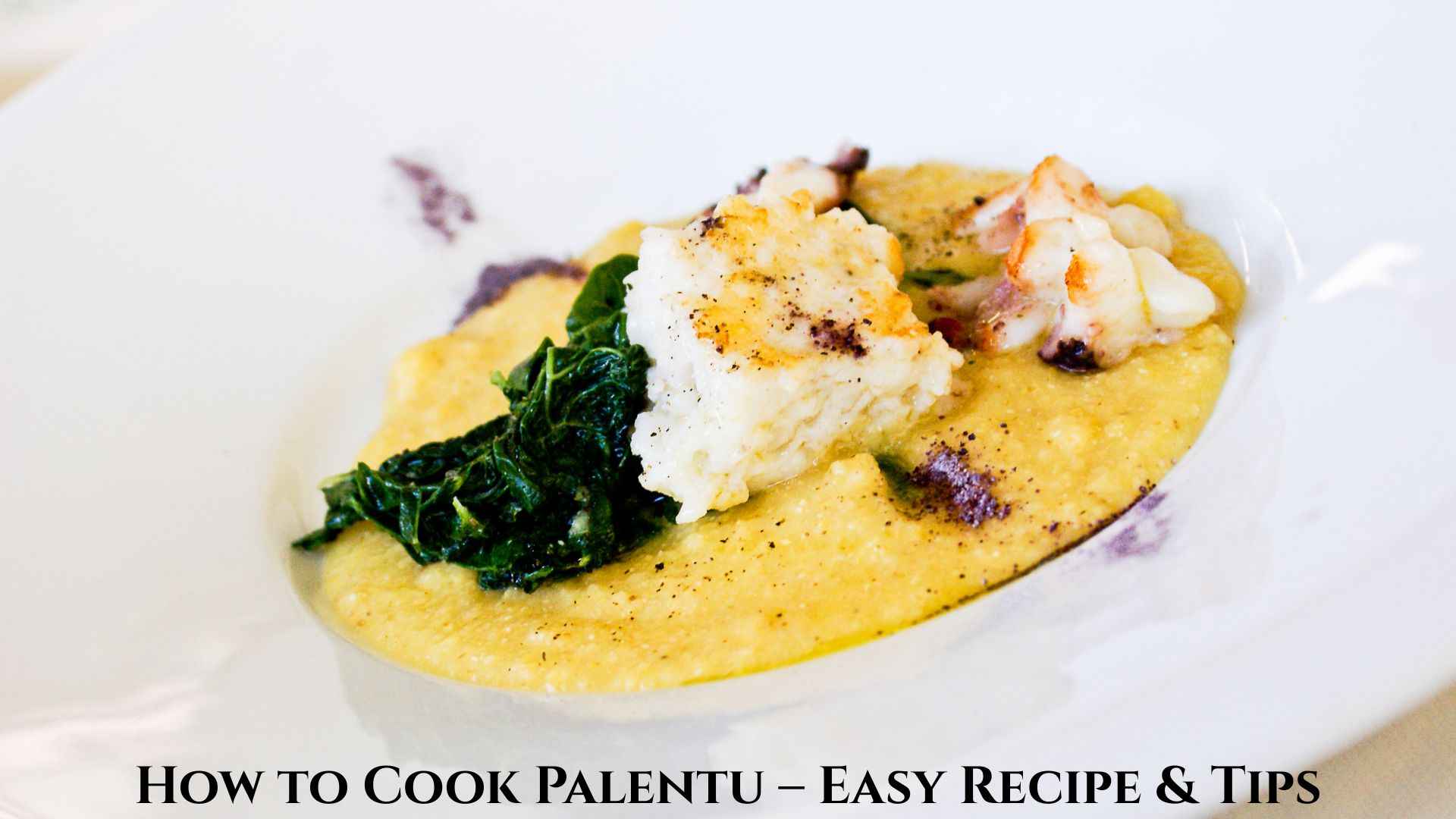Introduction to Palentu
If you’re looking to elevate your culinary game, then let me introduce you to a delightful dish known as Palentu. This unique and versatile staple is not just another side on your plate; it’s a flavorful experience waiting to happen! Whether you’re a seasoned cook or just starting out, learning how to prepare Palentu can open up new avenues in your kitchen.
Imagine creamy, warm cornmeal that can be dressed up with various toppings or served alongside hearty stews. The beauty of Palentu lies in its simplicity and adaptability. In this blog post, we’ll explore everything from its origins and types to cooking methods that suit both traditionalists and busy modern cooks alike. So grab your apron; let’s embark on this delicious journey into the world of Palentu!
What is Palentu?
Palentu is a delightful dish that hails from the culinary traditions of various cultures. At its core, it’s a versatile food made primarily from cornmeal and water. When cooked, this mixture transforms into a smooth, creamy consistency that can be served in numerous ways.
This staple has been cherished for centuries and can be found on tables across different countries. While some might think of it as similar to polenta, palentu offers unique flavors and textures depending on the region it’s prepared in.
One fascinating aspect of palentu is its adaptability; you can serve it soft or allow it to firm up before slicing. This flexibility makes it an excellent choice for many meals – breakfast, lunch, or dinner!
Cooks often enjoy experimenting with various spices and ingredients to elevate its flavor profile. From herbs to cheeses and even vegetables, there are countless ways to make palentu your own.
Its rich history connects people through shared meals and traditional recipes passed down through generations. Whether you’re discovering palentu for the first time or revisiting a beloved family recipe, there’s always something new to explore!
Origin and History of Palentu
Palentu has an intriguing history that takes us back to the heart of Italy. This delicious dish is believed to have originated in the northern regions, where it was a staple for peasants and farmers. Made primarily from cornmeal, Palentu provided both sustenance and comfort during harsh winters.
As time passed, Palentu expanded beyond its humble beginnings. It soon became popular across various Italian regions and even made its way into homes around the world. Immigrants carried their culinary traditions with them, introducing this delightful dish to new cultures.
Interestingly, Palentu reflects regional variations too. In some areas, it’s cooked creamy and smooth; in others, it’s allowed to set before being sliced or grilled. These differences highlight how versatile this simple ingredient can be.
The name “Palentu” itself derives from ancient words related to grain processing—a nod to its core ingredients. It’s fascinating how language evolves alongside food traditions over centuries.
Today, Palentu remains a cherished part of Italian cuisine while also gaining recognition globally as a comforting side dish or main course option that brings people together at the table.
Palentu Ingredients and Types
Palentu is a versatile dish that can be made with just a few simple ingredients. The star of the show is cornmeal, which gives it that delightful texture and flavor. You can choose from yellow or white cornmeal, depending on your preference. Both types work well in creating this delicious base.
Water is another key ingredient for cooking palentu. Some recipes also suggest using broth to enhance the taste even further. This helps infuse the cornmeal with additional flavors, making your dish more savory and satisfying.
You might encounter variations of palentu based on regional preferences or dietary needs. For instance, some people may add spices like salt or pepper during preparation for an extra kick. Others enjoy incorporating herbs such as rosemary or thyme to elevate its aroma.
There’s also room for creativity when it comes to mixing in other ingredients! Cheese lovers can stir in grated cheese right before serving for a creamy twist. Vegetables like spinach or roasted peppers are great additions too!
Don’t forget about toppings! From rich sauces to sautéed mushrooms and meats, there’s no shortage of ways to dress up this versatile dish according to your tastes.
Traditional Method of Cooking Palentu
Cooking palentu the traditional way is a delightful experience. It’s all about patience and technique, something that brings people together in the kitchen. The first step is to gather your ingredients: cornmeal, water, and salt. Simple yet essential.
Begin by boiling water in a large pot. You want it bubbling nicely before adding salt for flavor. Once it’s ready, slowly whisk in the cornmeal to avoid lumps forming—a tricky but rewarding part of the process! Keep stirring continuously; this helps achieve that creamy texture everyone loves.
As it thickens, lower the heat slightly but don’t stop stirring! This can take around 30 minutes or so; you’ll notice it pulling away from the sides of the pot when done correctly. The aroma fills your kitchen—pure comfort!
Many folks pour their cooked palentu onto a wooden board or countertop to cool down and firm up before slicing into shapes or wedges later on. This method really captures its authentic essence.
Serve hot with butter on top or as a side dish for savory stews and sauces. Cooking palentu traditionally allows you to connect with generations of culinary history while enjoying every bite along the way.
Modern and Quick Ways to Prepare Palentu
Cooking palentu doesn’t have to be a long process. With modern techniques, you can whip up this delicious dish in no time. One popular method is using the microwave. Just mix your cornmeal with water or broth in a microwave-safe bowl and cook it for about five minutes. Stir halfway through for even consistency.
Another quick approach involves using instant cornmeal. This pre-cooked variant cooks up in just a few minutes when you add boiling water or broth. It’s perfect for those busy weeknights when you’re craving comfort food without the wait.
You could also consider utilizing an electric pressure cooker, which significantly reduces cooking time while enhancing flavors. Simply combine your ingredients, set the timer, and let the machine do its magic.
For added convenience, some brands offer ready-made palentu that only requires reheating. While not as satisfying as homemade, they’re great in a pinch.
Experimenting with different broths or adding spices during preparation will elevate your quick meals to gourmet status without much effort!
Best Serving Styles and Food Pairings for Palentu
Palentu is incredibly versatile, making it a fantastic base for various dishes. One of the most popular serving styles is to slice it into thick pieces and grill or fry until golden brown. This adds a delightful crunch that contrasts beautifully with its creamy interior.
For a more traditional approach, you can serve palentu warm and soft right out of the pot. Simply spoon it onto your plate, allowing guests to enjoy its smooth texture as they pair it with their favorite toppings. A drizzle of olive oil or a sprinkle of fresh herbs elevates this simple dish.
When thinking about food pairings, consider hearty meats like braised beef or roasted chicken. These robust flavors complement the mild taste of palentu perfectly. Don’t forget vegetables! Roasted seasonal veggies add both color and nutrition to your meal.
Cheese lovers will also rejoice—grated Parmesan or crumbled feta sprinkled on top creates an irresistible combination. For something unique, try pairing palentu with tangy sauces like marinara or pesto for an unexpected twist.
Don’t shy away from experimenting! Palentu can be topped with sautéed mushrooms or even served alongside rich stews for those cozy nights in.
Nutritional Value and Health Benefits of Palentu
Palentu is not just delicious; it also brings several health benefits to the table. This staple food is primarily made from cornmeal, which means it’s rich in carbohydrates, providing you with a quick energy boost. Perfect for those busy days when you need something satisfying and filling!
One of the standout features of palentu is its high fiber content. Fiber aids digestion and helps maintain a healthy gut. It can keep you feeling full longer, making it an excellent choice for weight management.
Moreover, palentu contains essential vitamins and minerals like iron and B vitamins. These nutrients are vital for maintaining good metabolism and overall health. They help convert food into energy while supporting your immune system.
Another great aspect of palentu is that it’s naturally gluten-free! This makes it suitable for those with gluten sensitivities or celiac disease, allowing everyone to enjoy this versatile dish without worry.
When prepared thoughtfully—like adding veggies or proteins—you can turn palentu into a balanced meal packed with nutrients that nourish both body and mind. It’s more than just comfort food; it’s beneficial too!
Palentu vs Polenta: Key Differences
When diving into the world of cornmeal dishes, you might stumble upon palentu and polenta. Though they sound similar, there are some key distinctions worth noting.
Palentu is often associated with certain regional cuisines, especially in Eastern Europe and parts of the Balkans. It’s typically made from finely ground cornmeal but can also incorporate different grains or even potatoes in various recipes.
On the flip side, polenta is an Italian staple. Made primarily from yellow cornmeal, it’s known for its creamy texture when cooked properly. Italians serve it as a side dish or base for meats and sauces.
Another difference lies in preparation methods. Palentu may be prepared more like a porridge—soft and spreadable—while polenta can take on different forms once cooled: firm enough to slice or grill.
Seasoning plays a role too! While both have mild flavors that absorb spices well, palentu often carries local herbs unique to its region compared to the classic Italian flavor profiles found in polenta dishes.
Common Mistakes to Avoid When Making Palentu
When making palentu, it’s easy to stumble into a few common pitfalls. One of the biggest mistakes is not using enough water or liquid. Palentu needs that moisture to achieve its creamy texture. If you skimp on this essential ingredient, you’ll end up with a grainy dish instead.
Another frequent error is cooking it over high heat. Patience truly pays off here! Cooking palentu slowly over medium-low heat allows for better consistency and flavor development. Rushing through can lead to clumps and uneven cooking.
Don’t forget about stirring! Failing to stir regularly can cause lumps in your mixture, ruining the smoothness you’re aiming for. Stirring often helps break up those pesky clumps early on while evenly distributing all ingredients.
Using stale cornmeal is another misstep many make when preparing palentu. Always check the expiry date on your cornmeal package; fresh grains yield far superior results in both taste and texture.
Neglecting seasoning is a common mistake that can leave your palentu bland. A little salt goes a long way in enhancing flavor—don’t skip it! Adding herbs or spices during cooking gives an extra depth that’s hard to resist.
Final Thoughts on Palentu and Its Culinary Importance
Palentu is more than just a dish; it’s a delightful experience that connects you to rich traditions and flavors. This versatile food has roots deep in history, showcasing the culinary creativity of various cultures. Whether you enjoy it as a comforting side or elevate it into a gourmet meal, palentu offers endless possibilities.
Cooking palentu invites experimentation. With different ingredients and methods at your disposal, each preparation can become unique to your taste preferences. Plus, its nutritional benefits make it not only delicious but wholesome too.
As you explore this dish further, consider how palentu fits into modern dining practices while still paying homage to its origins. It encourages sharing meals with family and friends—an essential aspect of any culture’s cuisine.
So next time you’re thinking about what to cook for dinner or looking for something new to try, remember the charm of palentu. Dive into its textures and flavors; you’ll be pleasantly surprised by how much joy this humble ingredient can bring to your table!


